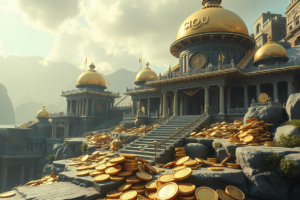Governance is a critical factor in determining the long-term success and sustainability of blockchain networks and decentralized autonomous organizations (DAOs). I have lived through a number of crypto cycles and witnessed firsthand the rise and fall of countless projects, some as a result of faulty governance models.
Given the number of fallouts between teams and their communities, the mechanisms by which decisions are made and implemented have become increasingly important. In this article, I explore various blockchain governance models, their advantages and disadvantages, and strategies for achieving an optimal balance.
What is Blockchain Governance?
Blockchain governance refers to the processes and mechanisms by which stakeholders in a blockchain network or DAO make decisions about the system’s future. This includes everything from technical upgrades and protocol changes to resource allocation and dispute resolution. The goal of effective governance is to ensure the network remains adaptable, secure, and aligned with the interests of its participants.
Blockchain networks broadly employ two primary governance models: on-chain and off-chain. On-chain governance involves decision-making processes that are directly encoded into the blockchain protocol. Proposals, voting, and implementation of changes occur on the blockchain, providing transparency and immutability to the governance process.
Some of the pros of this model are its transparency and auditability. It involves the direct participation of token holders and often supports the rapid implementation of approved changes. On the flip side, it has a high potential for plutocracy (rule by the wealthy). There is also difficulty in changing governance rules once implemented, in addition to the risk of low voter turnout.
Off-chain governance, on the other hand, relies on processes that occur outside the blockchain, such as discussions on forums, social media, or in-person meetings. Decisions made off-chain are then implemented by the core development team or other designated parties.
While this approach allows for nuanced discussions and compromise, with involvement from a wider range of stakeholders, it is less transparent and potentially more centralized. Implementation of proposed changes is also slower.
Delving deeper, here are some of the most popular blockchain governance models.
Popular Blockchain Governance Models
1. Benevolent Dictator Model
In this model, a single individual or small group has final decision-making authority. This is often seen in early-stage projects where the founder(s) retain control.
Pros:
- Quick decision-making
- Clear vision and direction
Cons:
- Centralization of power
- Potential for abuse or misalignment with community interests
2. Representative Democracy Model
This model involves electing representatives who make decisions on behalf of the community. Examples include EOS’s block producer system and Tezos’s delegation mechanism.
Pros:
- Balances efficiency with community input
- Can leverage the expertise of elected representatives
Cons:
- Potential for corruption or capture by special interests
- It may not fully represent diverse community views
3. Direct Democracy Model
In this model, all token holders can vote directly on proposals. Platforms like MakerDAO and Compound utilize variations of this approach.
Pros:
- Highly inclusive and participatory
- Aligns closely with blockchain’s decentralization ethos
Cons:
- It can be slow and inefficient for complex decisions
- Risk of low voter turnout or uninformed voting
4. Futarchy Model
Futarchy, proposed by economist Robin Hanson, involves using prediction markets to make decisions. While not yet widely implemented, projects like Augur are exploring this concept.
Pros:
- Incentivizes informed decision-making
- This can potentially lead to more optimal outcomes
Cons:
- Complex to implement and understand
- It may be vulnerable to market manipulation
Striking the Right Balance
Finding the ideal governance model is an ongoing challenge in the blockchain space. A handful of crypto projects have already wound down DAO operations. Nevertheless, I believe blockchain governance should be refined to combine the best features of existing models.
Combining elements of different governance models can help mitigate their individual weaknesses. For example, a system might use representative democracy for day-to-day operations but require direct token holder voting for major protocol changes.
Secondly, starting with more centralized governance and gradually transitioning to more decentralized models as the project matures can help balance stability with community empowerment. Implementing mechanisms that require voters to have a stake in the network’s long-term success, such as token lock-up periods or quadratic voting, can help align incentives and prevent short-term thinking.
Meanwhile, dividing governance responsibilities among different groups (e.g., technical committees, treasury management, dispute resolution) can provide checks and balances and leverage specialized expertise. And of course, teams should build mechanisms to evolve the governance system based on community feedback and changing needs.
Conclusion
Blockchain governance is a complex and evolving field, with no one-size-fits-all solution. The ideal model depends on a project’s specific goals, community dynamics, and technical constraints. By carefully considering the trade-offs between different approaches and implementing balanced, adaptive systems, blockchain projects can create governance structures that promote innovation, security, and long-term sustainability.
The ongoing experimentation and refinement of these systems will play a crucial role in shaping the future of decentralized technologies and their impact on society at large.
















